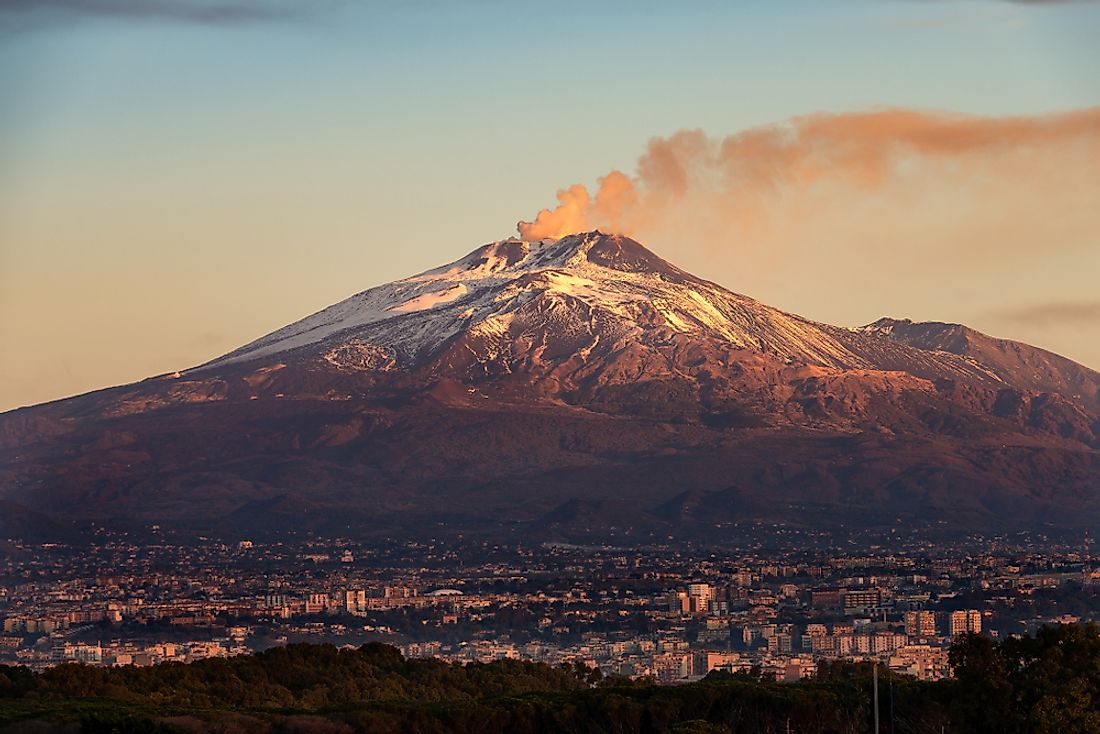Difference Between an Active, Dormant, and Extinct Volcano

A volcano is a geographic feature that often resembles a mountain, though the two are not the same. Volcanoes differ from mountains in that they contain an opening to the layers below the Earth's crust. This opening means that volcanoes have direct access to lava and gases stored below the Earth’s surface, and can therefore release these elements into the atmosphere. This article highlights the differences between active, dormant, and extinct volcanoes.
Active Volcanoes
Researchers do not currently agree on an official definition of active volcanoes. However, they are often considered to include geographic features which have had some activity within the last 10,000 years. In other words, active volcanoes are those that have erupted since the last ice age. The weakness with this definition, according to critics, is that a volcano may have erupted over the last few thousand years, but is not likely to erupt again soon. Other definitions of active volcanoes stipulate that the feature must be currently exhibiting some sort of activity, and not limited to eruption. Such activity may include frequent seismic activity as tectonic plates begin shifting around the base of the volcano. This movement may allow the release of significant amounts of carbon dioxide, sulphur dioxide, or other gases into the atmosphere.
Current active volcanoes around the world include: Mount Etna (Sicily, Italy); Mount Nyiragongo (Democratic Republic of the Congo); and Mount Kilauea (Hawaii, United States.
Dormant Volcanoes
Dormant volcanoes are typically considered active volcanoes, because they have erupted since the last ice age, but are currently not erupting. A dormant volcano may erupt again at some point in the future. Some researchers suggest a volcano is dormant, rather than extinct, if there is some record of its past activity. Other researchers consider dormant volcanoes to be those geographic features that have not erupted since the last ice age, but are expected to erupt again in the future. Scientists suggest that some dormant volcanoes may be reactivated by climate change. This reactivation can occur when harsh weather conditions change the pressure of nearby ocean waters, resulting in volcanic activity and possible eruptions.
Examples of dormant volcanoes include: Four-Peaked Mountain (Alaska, United States); Mount Pinatubo (Philippines), and Soufriere Hills (Montserrat).
Extinct Volcanoes
In contrast to the dormant volcano, an extinct volcano has not erupted over the last ice age, which ended approximately 10,000 years ago, and is not expected to erupt again in the future. Although an extinct volcano is believed to lack the ability to ever erupt again, several geographic and seismic records indicate that this assumption is not always true. An example of this is Four-Peaked Mountain in Alaska, mentioned above. This volcano was believed to be extinct until 2006, when it began exhibiting signs of activity, and is now classified as dormant. This definition of extinct is based on the calculated assumption that these volcanoes no longer have a source of lava, but this cannot be accomplished with absolute certainty.
Volcanoes believed to be extinct around the world include: Zuidwal Volcano (Netherlands); Emperor-Seamount chain (Hawaii, United States); and Mount Kulal (Kenya).







